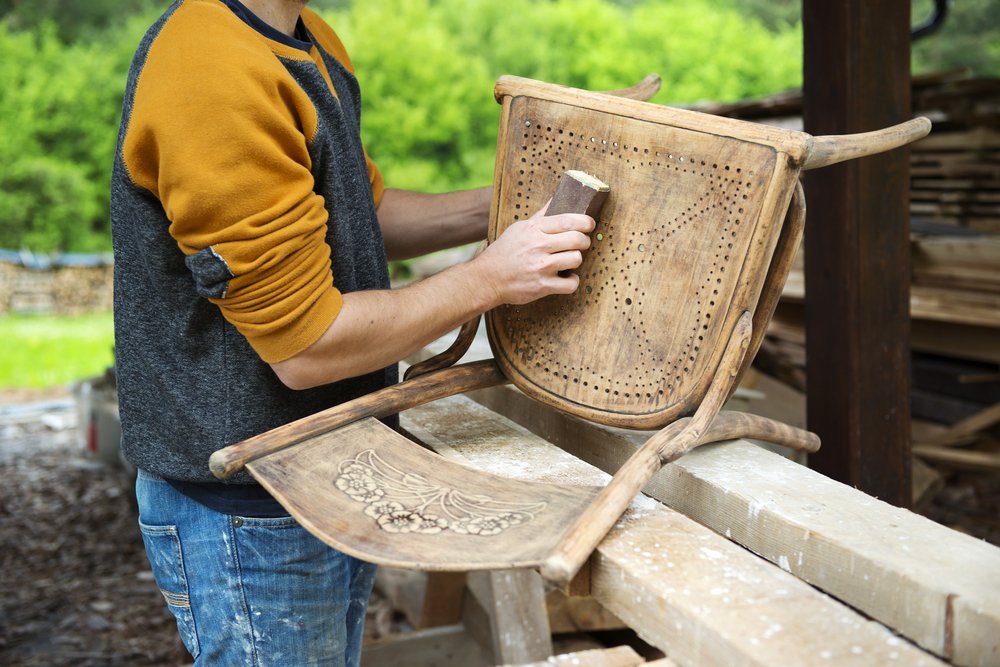How to Restore and Refinish Antique Furniture
Beautiful antique furniture can add a unique charm to any home—but only if it's safely restored and refinished. Wood with a worn-through finish, broken wicker seating, and stained or torn fabrics can make antique furniture seem rundown or unsafe.
In this guide, the experts at Old Crows Antiques will walk you through the steps we use to bring antique furniture back to its original state. Keep reading to learn how to restore antiques that needs a little extra love and how to refinish antique furniture that needs an in-depth approach.
Determine What Kind of Restoration a Piece Needs
Knowing how to restore antique furniture is a fun skill to learn. There are many types of restoration out there. Deciding which method to use depends on the material and style of the furniture (and the potential damage and wear).
Before beginning any restoration work on antique furniture, it is important to do thorough research to understand the history and value of the piece. This research will help you make informed decisions about the restoration process and ensure that you are not damaging the integrity of the piece with a DIY restoration.
Some of the most common types of furniture in need of specialty professional restoration include:
Wood furniture and antiques: Try to avoid modern materials for these projects. Repair artisans can use traditional techniques to restore—not just repair—your heirloom.
Fabric cushions and upholstered furniture: Frequently used cloth furniture may have tears, worn patches, and hems coming loose from the frame. You may need a professional to handle those more complex tasks. But all fabric-based antiques can shine with gentle cleaning.
Wicker furniture: The edges of these seats often come loose or rip, but finding a traditional craftsman is tricky. You can try some DIY repairs or replace it with modern wicker.
Signs It's Time to Refinish
The first sign of wear doesn't mean it's time to refinish your antiques. Many interior designers and collectors love the patina or oils that can build up in antique heirlooms over time. Instead, use these signs to gauge whether your furniture needs repair or restoration:
Damage is spreading: A few chips of paint or worn patches are one thing. But if you frequently find yourself cleaning up bits of your antique furniture, talk to a preservation expert.
You don't feel safe or comfortable using it: Over time, even sturdy furniture will start to give way or creak loudly. Once you have to be tentative in how you use your antiques, start considering repairs.
Exposed wood: Paint, polish, and finish to protect the wood from dry rot and humidity. If the finish coat wears away or a crack reveals bare wood, it's time for refinishing.
Antique Restoration Supplies Checklist
If you want some hands-on experience in how to restore antique furniture, start with this list of must-have supplies:
Gentle, nonreactive cleaning solutions
Soft rags or microfiber towels
Scraper (for applying wood filler putty or pressing fabric back into narrow seams)
Camera (so you can take pictures of the original condition or record your disassembly process)
Wood oil
Matching the wood finish or clear wax
Gentle rust remover chemical
Professionals know how to restore antique furniture, so we recommend limiting DIY projects to basic cleaning and restoring projects.
The Process of Restoring Antique Furniture
Follow these basic steps to restore your antique furniture:
Decide if it is a job you want to do yourself or if you should turn to a professional. If it needs complex restoration or the furniture has a high dollar value, talk to an antique expert first for advice.
Clean a test spot on the back or underside of the furniture, using water first and gradually trying gentle cleaners. Use a non-abrasive material. If you are unsure what cleaners or type of cloth to use, stop by our antique mall and speak with our dealers, who can help you find the right product based on the furniture piece's age, material, and wear.
Apply the same cleaning mixture across the other surfaces until the piece is clean. Make sure you remove only dirt and built-up oil, not the finish (unless you want an in-depth refinishing project).
Let the furniture dry. During this time, inspect any fabrics for damage.
Apply a light wax or oil without any silicone. (Products with silicone can cause damage).
Maintain the Value of Your Antique Furniture With Expert Restoration
Old Crows Antiques has multiple dealers offering refinishing products, including stains, oils, and paints, perfect for restoring your furniture's original luster or changing it up to give it new life (we love refurbished and upcycled at Old Crows!). Stop by the Old Crows Antiques mall in Littleton, CO, to explore 42,000 square feet of antiques, memorabilia, and the perfect restoration and cleaning products for your heirlooms, or stop by for a terrific variety of antique furnishings.
Image Credit: amedeoemaja / Ground Picture / kasarp studio / Shutterstock



